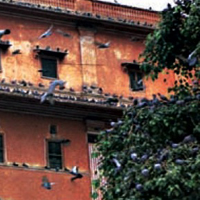The synanthropic status of wild rock doves (Columba livia) and their contribution to feral pigeon populations

All claims expressed in this article are solely those of the authors and do not necessarily represent those of their affiliated organizations, or those of the publisher, the editors and the reviewers. Any product that may be evaluated in this article or claim that may be made by its manufacturer is not guaranteed or endorsed by the publisher.
Authors
Wild rock doves still breed in suitable habitats along southern and insular Italy, even if their colonies are threatened by the genetic intrusion of feral pigeons. One of their prominent behaviours is the daily foraging flights from colonial to feeding grounds which involves coming into contact with man-made buildings. These are exploited firstly as roosting places near crop resources and later for nesting. This incipient synanthropy is not extended to direct food dependence on humans, by which they tend to remain independent. In the same way that ferals genetically intruded the wild colonies, in urban habitats, rock doves mix with ferals because of the large interbreeding possibilities. In the natural range of the wild species, this has occurred since the appearance of the feral form of pigeons and still continues with the residual populations of rock doves, representing their endless contribution to the feral populations, at least until the dissolution of the gene pool of the primordial form of wild rock dove.
How to Cite
PAGEPress has chosen to apply the Creative Commons Attribution NonCommercial 4.0 International License (CC BY-NC 4.0) to all manuscripts to be published.







